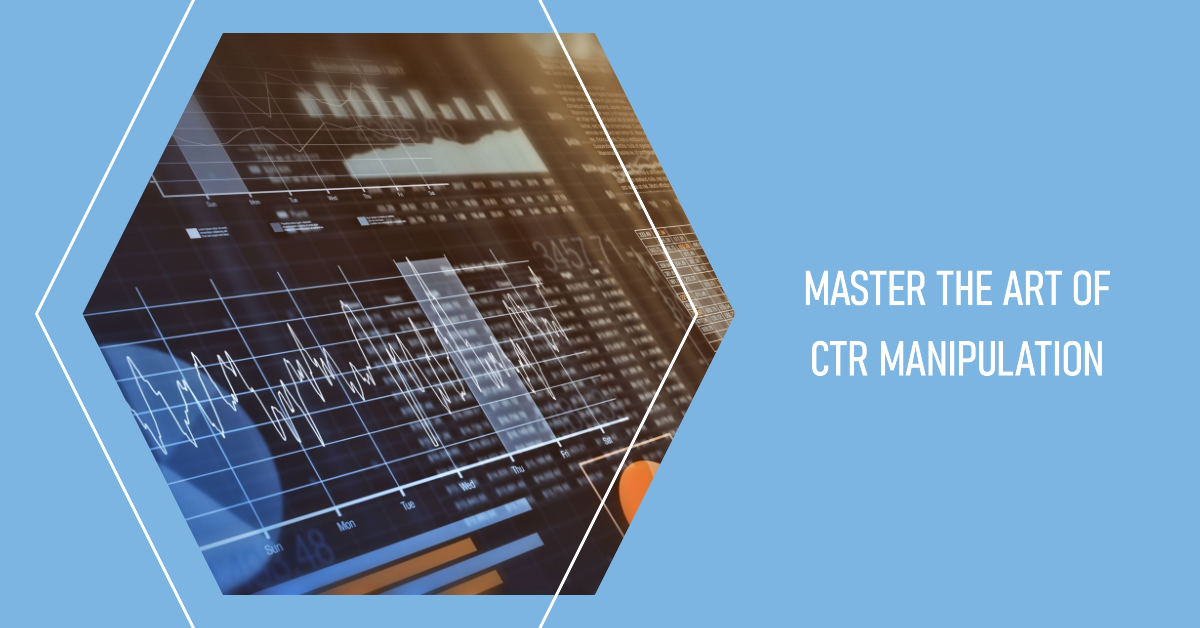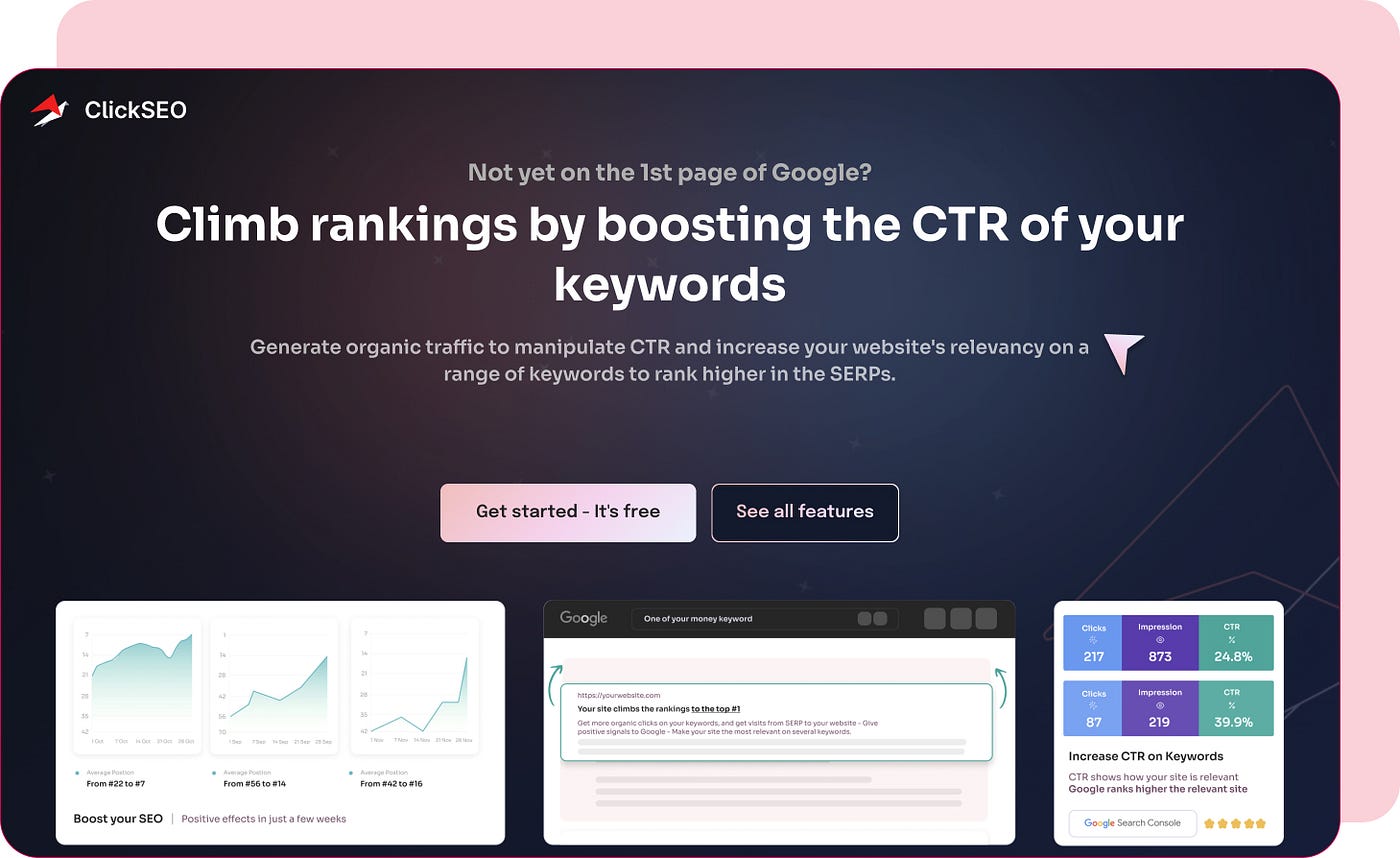Just How CTR Adjustment Can Lead to A Lot More Efficient Marketing Projects
CTR control is a contentious subject in the world of marketing, increasing ethical concerns and skepticism. This critical manipulation of CTR metrics holds the essential to opening a prize trove of opportunities for marketers looking for to boost their projects to brand-new elevations of success.
Understanding CTR Manipulation Methods
Exploring the world of digital marketing reveals a complicated landscape where Click-Through Rate (CTR) adjustment strategies play a substantial duty. CTR adjustment includes techniques intended at raising the number of clicks an on-line advertisement receives, eventually affecting its performance. One typical tactic is click fraud, where automated people or bots continuously click an ad without genuine rate of interest, artificially pumping up the CTR. Marketers might also participate in deceitful practices like hidden or misleading ad placements to deceive customers into clicking.
Another method entails click ranches, where individuals are paid to click advertisements, again distorting the CTR data. Marketers might purposefully place ads on pointless websites or use pop-ups to generate unintentional clicks, leading but improving the ctr to bad individual experience. While high CTR can initially seem advantageous, it is vital for advertisers to concentrate on top quality interaction as opposed to just clicks. Understanding these manipulation methods is crucial for marketers to make informed choices and make certain the efficiency and integrity of their marketing projects.

Leveraging CTR for Advertisement Efficiency
Discovering the impact of Click-Through Rate (CTR) on ad efficiency discloses a vital aspect of electronic advertising strategy. Leveraging CTR for advertisement efficiency entails recognizing how successfully an ad is engaging its target audience and driving them to take the wanted activity. A high CTR suggests that the advertisement is reverberating with the audience and motivating them to click through to the landing page, symbolizing relevance and effectiveness. By checking and examining CTR information, advertisers can gain important insights right into the efficiency of their advertisements and make educated decisions to optimize future projects.
In addition, leveraging CTR for ad performance permits marketers to fine-tune their targeting techniques, innovative components, and messaging to improve overall project efficiency. Marketers can check various ad variations, audience sections, and targeting criteria to determine what reverberates best with their target market and drives the highest possible CTR. This iterative approach based on CTR understandings aids advertisers continually improve their advertisement efficiency and achieve much better results in terms of interaction, conversions, and return on investment.

Impact of CTR on Campaign Success
CTR directly affects project success by showing the degree of engagement and interest produced by an advertisement. On the contrary, a reduced CTR suggests that the advertisement may not be properly recording the interest of viewers, resulting in squandered advertisement spend and inadequate project performance.
Additionally, CTR affects advertisement positioning and cost in platforms like Google Advertisements, where advertisements with greater CTRs are commonly compensated with far better ad positionings and lower expenses per click. This indicates that improving CTR not only improves immediate campaign performance yet also improves lasting marketing performance and return on investment. By closely optimizing and keeping track of CTR throughout a campaign, online marketers can make informed decisions to take full advantage of engagement, conversions, and total you can try here project success.
Strategies to Improve CTR Rates
Relocating from the influence of CTR on project success, it ends up being obvious that implementing effective strategies to boost Click-Through Fees is extremely important for optimizing digital marketing efficiency. One crucial technique is to produce compelling ad copy that relates to the target market, as relevance boosts the likelihood of clicks. Making use of distinctive visuals and succinct, persuasive language can additionally catch individuals' interest and encourage them to click on the advertisement.
Furthermore, optimizing ad placement is essential. Positioning ads where they are most likely to be seen, such as above the layer on a web page or within pertinent material, can significantly affect CTR. A/B testing different advertisement placements and layouts can assist identify one of the most effective approaches for a specific campaign.
Additionally, leveraging targeting options given by ad platforms can boost CTR prices. Targeting certain demographics, interests, and actions guarantees that ads are revealed to customers that are more likely to engage with them. By continuously monitoring and examining CTR information, advertisers can improve their approaches to try this out boost efficiency and accomplish their project purposes.

Optimizing ROI Through CTR Optimization
Optimizing Click-Through Rates (CTR) is a basic facet of making best use of Return on Financial investment (ROI) in electronic advertising and marketing. One efficient approach for taking full advantage of ROI through CTR optimization is to create engaging advertisement copy that reverberates with the target audience, triggering them to click on the advertisement.
Assessing and tracking CTR information is crucial for maximizing projects and enhancing ROI. By checking which ads have the highest possible CTR and making modifications as necessary, advertisers can improve their strategies to make best use of ROI. An extensive understanding of the target audience's preferences and actions is important for tailoring advertisement web content that drives engagement and increases CTR.
Conclusion
Finally, the evaluation of CTR manipulation techniques can offer important insights into customer behavior, leading to more efficient advertising campaigns (LinkDaddy CTR Manipulation). By leveraging click patterns to improve advertisement elements, advertisers can develop targeted and compelling content that resonates with their target market. Making best use of CTR rates with strategic optimizations can significantly influence project success and inevitably drive better traffic and conversions, enhancing the general ROI of advertising initiatives
Leveraging CTR for ad efficiency entails understanding just how efficiently an ad is engaging its target audience and driving them to take the desired activity.Additionally, leveraging CTR for advertisement performance enables advertisers to refine their targeting methods, creative components, and messaging to enhance overall project performance. On the contrary, a low CTR suggests that the anonymous ad might not be successfully catching the interest of customers, resulting in thrown away advertisement spend and poor campaign efficiency.
In addition, CTR affects advertisement placement and cost in platforms like Google Advertisements, where ads with greater CTRs are often compensated with far better advertisement positionings and lower expenses per click. One reliable technique for making the most of ROI with CTR optimization is to develop engaging ad duplicate that reverberates with the target audience, triggering them to click on the advertisement.